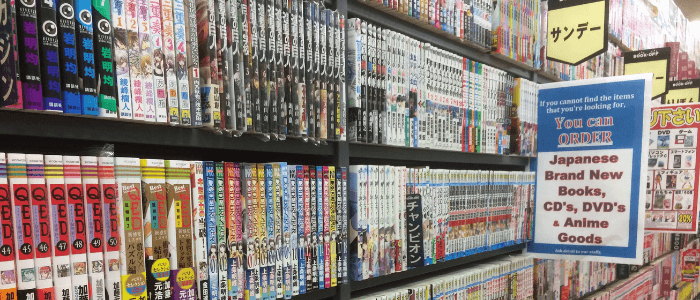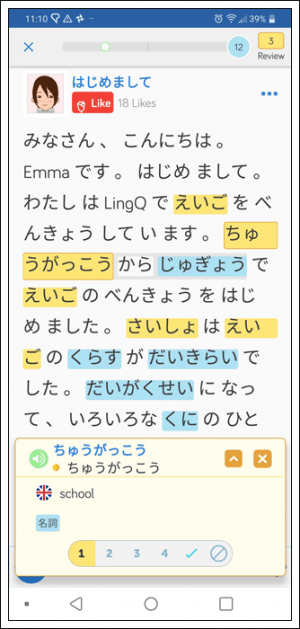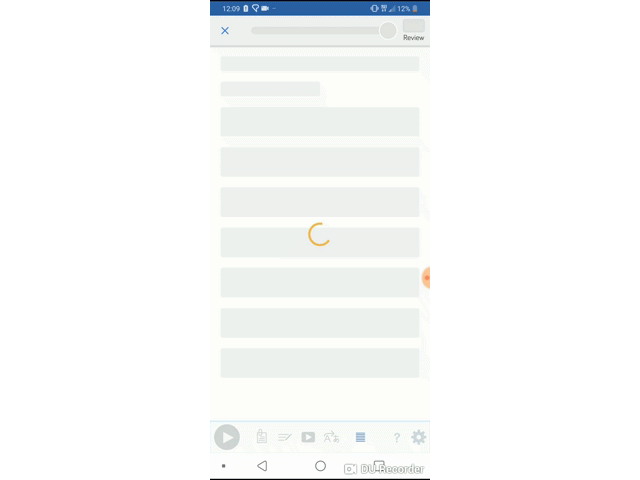Where to Find Helpful Content in Japanese for Beginners
Languages are not learned for the sheer sake of accumulating a stack of vocabulary words or conquered grammatical ideas, they’re learned to be lived and breathed.
Everybody studying Japanese will eventually come to this crossroads. Consuming native content isn’t feasible before reaching it, so we stick to textbooks, flashcards and guided learning materials. Upon crossing it, consuming native content will have become possible and the pursuit of fluency becomes a matter of exposure, patience and refinement.
There is also a hazy period of time in which this road must be crossed – to go from learning Japanese to living Japanese. This crossing is a journey in and of itself, an awkward state where Japanese media can be touched but not quite grasped.
I believe that it only takes one good piece of content to get across this road. If you can get through one solid piece of content then you can get through a second and a third until eventually you realize that you’re indeed on the other side: you can understand Japanese!
My goal today is to help you find this first stepping stone.

When am I ready to take the step into native content?
This is a question that only you can answer.
There is no clearly defined point at which your Japanese becomes good enough, this is very much a spectrum. At one extremity is study and at the other is leisure. The earlier you begin, the more study will be required. At what point these two extremities balance depends on your personal patience and tolerance for ambiguity.
In my case, I was somewhere between an N3/N2 level when I found myself at Step 0, a point at which I was able to look at Japanese text and humor the possibility of one day understanding it.
Step 0: Reading Real Japanese
I bring them up time and time again, but so far as I’m concerned, Read Real Japanese: Fiction and its counterpart, Read Real Japanese: Essays, are worthy of worship and worth their weight in gold.
Each book is a compilation of several unadulterated Japanese short stories or essays with added furigana, a running dictionary and a grammatical breakdown of each sentence. This is the closest you’ll get to training wheels. It’s as if a teacher were standing over your shoulder and providing a line-by-line explanation of everything that you’d just read.
LingQ’s Mini Stories and beginner content are other great resources for beginners. These pieces of content use the most common types of vocabulary to help you get used to Japanese. Each lesson also comes with audio to improve your listening skills.

The biggest benefit of using LingQ, especially for beginners, is its convenience. No matter what, you’re going to come across new vocabulary that is completely foreign to you. Rather than pausing to look up each word or phrase, if you use LingQ you can simply tap on the word (or phrase) to pull up its meaning. Not only does this save you a lot of time, it also helps minimize any disruption and helps you get through Japanese content faster. LingQ is the best way to learn Japanese online because it lets you learn from content you enjoy!
Step 1: Working through your first piece of native Japanese content.
I unfortunately don’t know what level of Japanese you have or your personal interests, so I’ve gone out and organized a variety of content that I think is suitable for someone just beginning to get into native content.
That doesn’t mean it’s easy, though. I’ve included each of the resources below because they each have at least one specific quality that makes them accessible. Your job is to decide what your biggest struggle in Japanese is and pick out content accordingly.
Reading content for beginners
If this is your first dive into content beyond the textbook, graded readers, or guided courses, I recommend starting with reading material. Whereas audio and visual content moves on and might include several words in the span of a second, reading content is static and leaves you as much time as necessary to pore over what you’re looking at. You can copy individual words into a dictionary, entire paragraphs into Google Translate or even import articles, anime, and much more directly into LingQ with one click via its browser extension. For example, below is a brand new lesson in LingQ using the transcript and audio from the popular anime, Shirokuma Cafe.

The most vanilla place to start is NHK Easy News, which is exactly what it sounds like. Normal news articles are taken and rewritten in a simplified format, furigana, audio-recording and pop-up dictionary included.
If you’d like to read something a bit more exciting than the news, check out MATCHA, an online magazine with a sister-site of articles written in simple Japanese. MATCHA has a wide variety of articles and a very aesthetic layout. Just like NHK, each simplified article also has a corresponding “normal” article that you can challenge yourself with after working through the simplified one.
Similar to MATCHA, Watanoc is another online web magazine with a wide variety of content aimed at beginners. Notably, WATANOC organizes its articles into JLPT Levels: there are almost 200 articles aimed at N5 or N4 and a few dozen aimed at N3. All of the articles on WATANOC are feature accompanying audio from a native speaker and a pop-up dictionary.
If you like reading but want something more meaty than Watanoc, there are 36 free graded reader lessons available on Wasabi. Each one is an original Japanese story that was rewritten for an ~N4 level. Each lesson comes with an English translation, audio and some brief grammar notes.
As mentioned, all of the above resources can be directly imported into LingQ so you can stay organized, look up new vocabulary, review, and learn Japanese at a quicker pace.
Video・Audio content for beginners
If you’re comfortable reading and are ready to move on for a challenge, or perhaps you’ve taken a more conversational approach to Japanese and are more comfortable hearing it than seeing it, I’m happy to say that there is an incredible wealth of audio (podcast, music) and video (TV, YouTube, anime, drama, etc) available in Japanese. Again, in no particular order:
To start out small, Hirogaru is a Japanese site with a lot of short, well-done videos made to teach foreigners about concepts important to the “essence” of traditional Japan – calligraphy, temples, tea and the like. Each video has available subtitles and an assortment of related articles that are narrated by native speakers.
Let’s Learn Japanese from Smalltalk is a new podcast that is super for people just beginning to get into natural Japanese. The two hosts are Japanese exchange students studying in England and they talk about everyday life topics like Valentine’s day in Japan or Disneyland. The podcast is almost all Japanese and while there are no scripts available, the hosts speak very clearly and often translate more difficult words into English. This is a great stepping stone between content for learners and native content. (Also available on Spotify and many podcast apps for Android users).
If you like this podcast, be sure to check out Easy Japanese by Easy Languages on YouTube! Each episode features a host walking around and interviewing random people on the street about topics like happiness or sushi. A major advantage of being on YouTube is that each episode is fully subtitled in English, Japanese and Romaji. Many different types of people are interviewed so this is a really great chance to get introduced to different styles of speech. Also, the LingQ extension allows you to import YouTube videos, allowing you to import content and create interactive lessons.
You might not think that rocket science and the intricate workings of our galaxy is a great place to start your journey into Japanese, but Next Space Project might beg to differ. Just like it sounds, the channel puts out videos on everything to do with outer space. While this does mean that there is some more difficult vocabulary featured, I think this is made up for by the fact that each video is fully subtitled and narrated in a clear, relatively slow voice.
On a more worldly level, Japan is blessed with a quite significant YouTube scene, at the top of which is Hikakin. Hikakin films himself doing all sorts of goofy stuff – in this video he’s making a giant ball of aluminum – and is oddly entertaining. This content is intended for Japanese people, not learners, but Hikakin is very expressive and tends to subtitle the gist of what he’s saying. If you like Hikakin, there are many similar Japanese YouTubers such as Hajime or Fischer. I personally have a special place in my heart for Kyou chan.
Final thoughts
No matter what you choose or what your current level is, the first piece of content that you work through is going to be the hardest. Japanese aside, this is because the first piece of media you consume is where you overcome the psychological barrier of consuming content for “natives” and prove to yourself that you are good enough. The more you consume the easier it gets, so just pick something that you enjoy enough to be patient with and keep at it!


